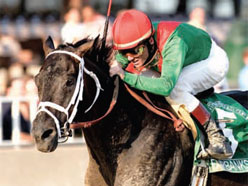
Actively managed mutual funds are facing a more serious hurdle than the growing popularity of ETFs. A new study finds some aren’t being managed as actively as their fees suggest.
Dr. Martijn Cremers, professor of finance at the University of Notre Dame, recently examined the 20 largest Canadian funds (excluding ETFs), representing three main categories – Canadian equity, Canadian-focused equity, and Canadian dividend.
What he found was nothing short of a revelation: only 2 funds were truly active, while 12 were in what he calls the “closet index” category. The rest were dubbed moderately active.
In a truly active fund, more than 80% of its holdings differ from the fund’s benchmark index. In a true index fund, fewer than 20% of its holdings differ from the benchmark. Cremers calls the funds with 20%-to-60% different holdings closet index funds, while he considers funds in the 60%-to-80% range moderately active.
Read: Active management beats index in Q1 2012
His conclusion?
“We should move beyond the active and passive debate and consider whether or not we are paying for truly active management. Closet index funds underperform the benchmark by about 100 basis points a year and highly active funds outperform by about 100 basis points — higher if they are smaller and have a good track record.”
Read: Active investing is here to stay
Cremers further highlights the difference between active and passive in his 2011 research paper, The Mutual Fund Industry Worldwide: Explicit and Closet Indexing, Fees, and Performance.
The study found Canada, with one of the largest fund industries in the world, has a low level of explicit indexation (2%) but a much larger level of closet indexing (40%).
And there’s bound to be a performance gap between truly active and closet index funds, he adds. “Logically, exactly half of the assets in the benchmark will outperform the average, the other half is below the average.”
Read: Active versus passive: the new debate
So, active portfolio managers should either pick stocks that are going to outperform the average, or find non-benchmark assets that will do the same.
Real outperformance starts when a fund’s active component is above 80%, reiterates Cremers. And to be able to successfully manage such a fund, the asset manager must have three characteristics, in addition to a good track record. These are:
Skill: the ability to identify investment opportunities.
Conviction: the courage to create a portfolio that’s very different, particularly if the market’s volatile, with good risk management.
Opportunity: lack of opportunities will be detrimental to having a high active component in a fund, despite its manager’s superior skills.
In difficult markets, good managers limit their downside. “There have been years when even truly active funds with skilled managers have had difficulty outperforming,” says Dr. Cremers. “We saw that in 2008, the year when most active funds fell far short of the benchmark.”
It was also a period that put a huge premium on liquid stocks. And benchmark stocks tend to be more liquid.
“It must be remembered that the index is market weighted, so when you have a trending market, the index will perform well,” says Cremers. “But that’s also how bubbles get formed and it takes a skilled active manager to be able to identify and avoid those.”